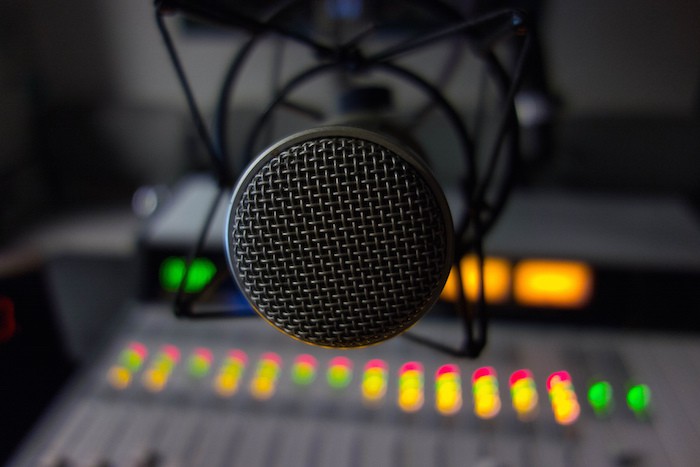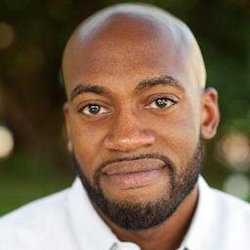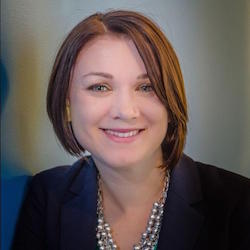
If you listen to public radio, you probably have your own theory about the voice. It’s deep and sonorous. It’s engaged, curious. Some of you might say it’s smart. Or boring. Or whispery. Or white.
The past few months have featured lots of opining about the public radio voice. In January, Chenjerai Kumanyika kicked off a fascinating conversation about the “whiteness” of the voice. Stories on NPR and This American Life have tackled the phenomenon of “vocal fry,” that creaky sound you hear when the voice drops to its lowest register. And listeners have seriously strong feelings about this stuff. They even create elaborate spoofs, like this send-up of the “annoying” podcast voice.
But what about the people who have to talk everyday on the radio or on podcasts? What does it actually take to find your voice as a radio reporter or host? What follows comes from two NPR reporters, Sam Sanders and Tamara Keith.
First, Sam: As that Twitter conversation about race and the public radio voice was galloping along in January, Sam, age 30, wrote this:
It took me YEARS to start WRITING how I actually SPOKE in real life. #pubradiovoice
— Sam Sanders (@samsanders) January 29, 2015
 He was hinting at the difficult balancing act reporters face in developing their on-air voice. It isn’t just a challenge of performance — and it’s not as simple as channeling some “authentic” voice into a microphone. It requires grappling with your identity and your writing process, along with history of your institution.
He was hinting at the difficult balancing act reporters face in developing their on-air voice. It isn’t just a challenge of performance — and it’s not as simple as channeling some “authentic” voice into a microphone. It requires grappling with your identity and your writing process, along with history of your institution.
How do you find the happy spot where those things meet? “I think the goal is for all of us doing radio to make it sound effortless,” Sam wrote in an email. “To keep our essence in our reads and make the listener think we’re ‘just talking,’ while knowing that the journey to that ‘just talking’ place takes a lot. A lot of thought. A lot of practice. And a lot of time.”
When you send your voice out into the ether, you can’t control who hears it or how they interpret it. How they interpret you:
Should I make an effort to sound black on the radio, whatever that means? To prove that I have a unique perspective and yadda yadda yadda? Should I purposefully sound Texan? Or like someone who was raised Pentecostal? I could go on.
I’ve had to let that go. Some of my friends think I always sound “black” on the radio. Other colleagues say they never would have known. Sometimes my Texas comes out. Sometimes I actually sound like a Californian. But what is most rewarding for me now is that people know it’s Sam Sanders when they hear me on the air.
It starts with writing:
I can look back on one of my latest radio scripts, a Morning Edition obit on ESPN anchor Stuart Scott. There are several lines I would have been afraid to write years ago, in part because I assumed all the rules of written grammar apply to writing for radio. When I really started writing to my voice, I realized a lot of those rules can be disregarded. Here are some lines from that script that I think I wrote just for me:
SAM: Stuart Scott might be BEST known, really, for one word —
<<TAPE: BOO-YAH>>
SAM: BOO-YAH. He sprinkled it throughout his sportscasts for YEARS — kinda like a really cool exclamation point. But it was more than just boo-yah. On ESPN, Stuart spoke the language of young people. Of hip-hop.
Do you see what I did there? I used incomplete sentences. I said “kinda.” I used a simile with the words “really cool.”
Sam also points out that he later calls Stuart Scott “really good” at what he did “instead of something print newsy like ‘a phenomenally gifted newsman’ or ‘a revolutionary voice that defied convention blah blah blah.'”
In order to reach this point of confidence, Sam had to overcome something familiar to almost everyone in public radio: “try[ing] to sound like other people we’ve heard on the radio, or the person who is training us.” Not to mention, the Ira Glass factor. “I hear a lot of people trying to talk like Ira Glass on air. For one, his voice really only works for him. For two, just do you, people!”
But just being ourselves, frankly, ain’t simple.
Many women are the target these days of accusations of “vocal fry.” To some listeners, this sound is fingernails on a chalkboard. For others, it’s just how young people talk in the 21st century. This video is a great introduction:
 You can hear NPR White House correspondent Tamara Keith, 35, in that video. She started reporting while still a teenager. “I worked hard to sound more grown up,” she wrote in this blog post. She bought power suits and wore glasses. “My insecurity meant not much of my personality made it into my pieces.”
You can hear NPR White House correspondent Tamara Keith, 35, in that video. She started reporting while still a teenager. “I worked hard to sound more grown up,” she wrote in this blog post. She bought power suits and wore glasses. “My insecurity meant not much of my personality made it into my pieces.”
I spent probably 10 years trying desperately not to sound like what I was, which was a young woman from California, with an occasional Southern twang; I blame on my mother who grew up in Texas and speaks full-on Texan when on the phone with my grandmother. I went through more voice training sessions than I care to remember with high priced professional coaches (paid for by well-meaning employers). I don’t know if any of it really helped. For years I felt like I knew how to get amazing tape. I could write a script I was proud of, and then I destroyed it when I voiced the story. I thought everything I did sounded terrible. It was so frustrating.
And then at some point I realized I had been making a terrible mistake. My stories didn’t sound right because they didn’t match up to the voice I heard in my head when I was writing them. The thing that was missing from my reporting was: me.
So, basically I’ve spent the last 10 years of my career trying to undo what I did in the first ten years. People used to tell me, “I heard you on the radio and I didn’t even realize it was you,” and I took it as a compliment. Now I take it as an insult, a well-intentioned insult.
I feel confident saying that Tamara now sounds like herself on the radio. You can listen here. But her headline on this blog post gives you a sense of the never-ending challenge: “How I Found My #PubRadioVoice (Spoiler alert: I’m still working on it).”
Alison MacAdam is senior editorial specialist at NPR’s Training Unit. She is a former senior editor of All Things Considered and was a 2013-14 Nieman Fellow.